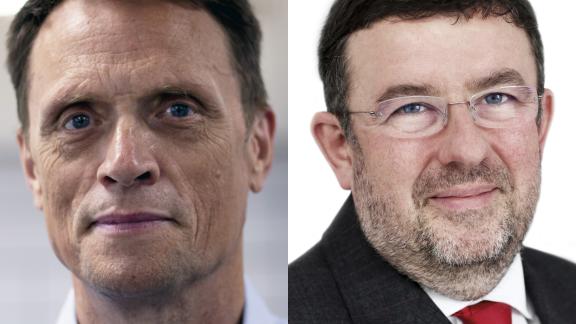Invest in the NHS and it will deliver for the country

Back in the early 2000s, NHS patients routinely waited 18 months or longer for treatment. Stories of patients being left in pain on trolleys in hospital corridors were all too common. After years of under-investment, the government of the time faced up to a stark reality: either invest in the NHS to address the backlog of care or condemn millions of patients to further pain and delays.
The extra NHS funding that followed saw waiting times plummet. By the late 2000s, as a patient you would most likely wait 18 weeks, not 18 months, for an operation and no more than four hours in A&E. If you were unfortunate enough to suffer from one of the three big killer diseases of cancer, heart failure or stroke, your survival chances were much higher.
Fast forward 20 years and, exacerbated by the unprecedented impact of COVID-19, we are now at a similar inflection point, with key NHS funding decisions due shortly.
The government must now make the right decisions on funding so that the NHS can rebuild
Because of the impact of COVID-19, the NHS faces huge challenges – spiralling waiting lists for care across hospitals, mental health and community services. Ambulance services so stretched that, despite best efforts at the frontline, the army has had to help some NHS trusts this summer. Staff shortages of almost 90,000. 8 million people with mental health conditions who could benefit from treatment but can’t access it. A £9 billion maintenance backlog. And key manifesto commitments to build 40 new hospitals and reform social care to be delivered.
Locked in a downward spiral
The government must now make the right decisions on funding so that the NHS can rebuild and start to get back to the performance levels and improved patient outcomes that were routinely achieved in the late 2000s before a decade of austerity in the 2010s reversed many of these hard-fought gains.
If they get it wrong, the NHS will be locked into a downward spiral of lengthening waiting lists, ambulances regularly queuing outside over-crowded hospitals, and thousands of children and young people not getting the care they need for eating disorders and the other mental health conditions that COVID-19 has triggered.
In the late 2000s, surgery waiting lists were around 2.5 million. Today they stand at almost 5.5 million. The Secretary of State for Health and Social Care thinks this number could sky-rocket to 13 million.
We do not have to accept this and, as the early 2000s showed, if we invest in the NHS, we can tackle a seemingly irreversible, worsening, position. The pandemic reinforced this lesson.
Changing their tune
The Treasury is prone to insist that investment is matched by reform. Encouragingly, there is a broad consensus within the NHS about the direction of policy, a commitment to join up local services and a focus on tackling the health inequalities that have been cruelly highlighted by the pandemic. Furthermore, with the right investment the NHS can build on recent progress in the use of digital services and exploit the potential of earlier diagnosis and new forms of treatment.
To the government’s credit, it largely met its pledge to give the NHS the financial support required to respond to COVID-19. This enabled the NHS to roll out the earliest, and one of the most successful, COVID-19 vaccination programmes in the world.
It will cost close to an extra £5 billion for the NHS to cope with the higher running costs that COVID-19 will bring next year.
It also enabled the NHS to triple critical care capacity at the drop of a hat to cope with 34,000 hospitalised COVID-19 patients in this January’s COVID peak. And it helped the NHS identify world leading new COVID-19 treatments, like dexamethasone and remdesivir.
But now the Chancellor and the Treasury are changing their tune. They’re arguing that COVID-19 costs will fall away quickly and that the NHS will, largely, be able to live within the settlement it received in 2018. This is, at best, very over-optimistic but, at worse, a miscalculation that could cost lives.
New analysis released by NHS Providers and the NHS Confederation shows that it will cost close to an extra £5 billion for the NHS to cope with the higher running costs that COVID-19 will bring next year. Extra costs include COVID infection prevention and control arrangements, such as extra cleaning, to treat patients safely and more personal protective equipment for an exhausted workforce. This is alongside the costs of dealing with new long COVID patients and extra mental health demand.
It will then cost an extra £3-4 billion a year, over each of the next three years, to treat the care backlog and avoid a potential waiting list of 13 million people. We also need to recognise that, because of the overwhelming focus on COVID-19 and recovering care backlogs, the NHS wasn’t able to make the efficiency savings assumed in the 2018 settlement and will take some time to do so.
Investing in the NHS is important for the nation’s health, but will pay dividends far beyond.
Our analysis suggests that the unique impact of COVID-19 means the frontline NHS will need around £10 billion of extra funding next year. And that’s before the cost of delivering the manifesto commitments and central government COVID-19 costs, like test and trace and COVID vaccinations.
Investing in the NHS is important for the nation’s health, but will pay dividends far beyond. The NHS is the largest employer in many areas, providing good jobs with scope for career progression. Poorer areas suffer from many more people out of work and on benefits due to poor health and threadbare care provision. Investment in the NHS is integral to a strategy of levelling up.
Time for bold action
The last time the NHS faced a challenge of this magnitude in the early 2000s it took a bold commitment from the government – and public support for that commitment through higher taxes – to give the NHS the resources it needed to drive down waiting times and improve quality of care. As a result, a generation were largely spared the pain and anguish of lengthy waiting times.
The government today needs to provide a similar response. And, if it does, just like in the 2000s, the NHS will deliver for the public.
Matthew Taylor is chief executive of the NHS Confederation. Chris Hopson is chief executive of NHS Providers. Follow them and both organisations on Twitter @FRSAMatthew @nhsconfed @ChrisCEOHopson @nhsproviders



